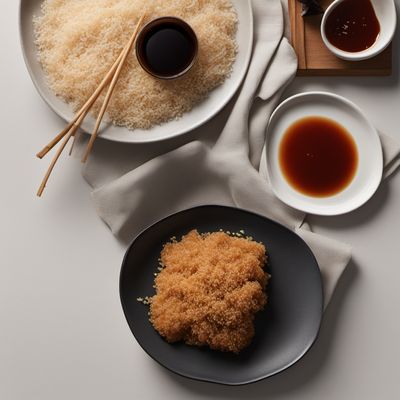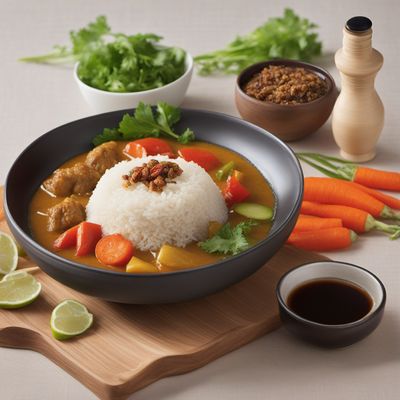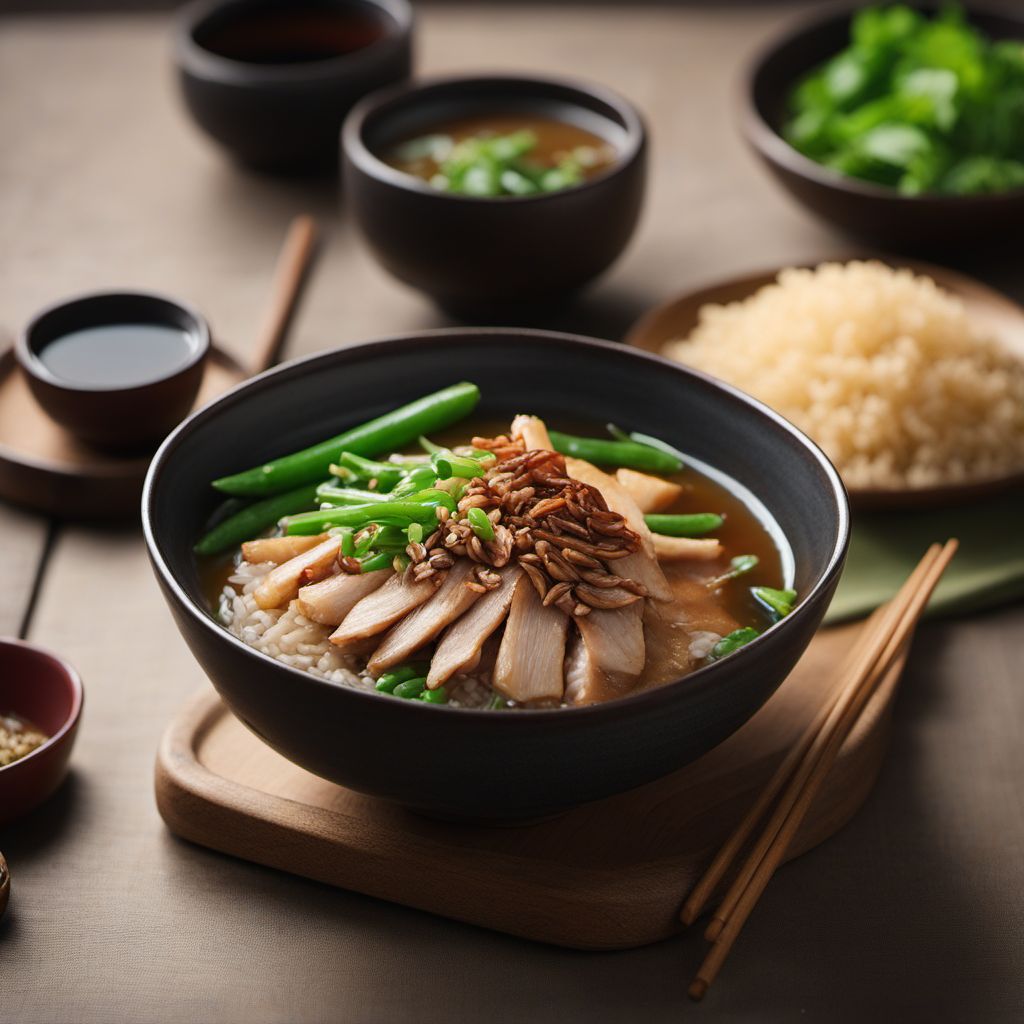
Recipe
Nagoya-style Takikomi Gohan
Umami-infused Rice Delight: Nagoya-style Takikomi Gohan
4.7 out of 5
Indulge in the flavors of Nagoya cuisine with this delightful twist on the classic Japanese dish, Takikomi Gohan. Bursting with umami, this Nagoya-style version combines fragrant rice with locally sourced ingredients, creating a comforting and satisfying meal.
Metadata
Preparation time
10 minutes
Cooking time
20 minutes
Total time
30 minutes
Yields
4 servings
Preparation difficulty
Easy
Suitable for
Gluten-free, Dairy-free, Nut-free, Low-fat, Low-sodium
Allergens
Soy
Not suitable for
Vegan, Vegetarian, Paleo, Keto, High-protein
Ingredients
In Nagoya-style Takikomi Gohan, the traditional Japanese dish is adapted to incorporate the distinct flavors of Nagoya cuisine. This includes the use of locally sourced ingredients such as Nagoya cochin chicken, Nagoya red miso, and Nagoya-style dashi broth. These ingredients add a unique depth of flavor and richness to the dish, setting it apart from the original version. We alse have the original recipe for Takikomi gohan, so you can check it out.
-
2 cups (470ml) Japanese rice 2 cups (470ml) Japanese rice
-
2 cups (470ml) Nagoya-style dashi broth 2 cups (470ml) Nagoya-style dashi broth
-
1 Nagoya cochin chicken breast, thinly sliced 1 Nagoya cochin chicken breast, thinly sliced
-
1 tablespoon Nagoya red miso 1 tablespoon Nagoya red miso
-
1 cup (150g) bamboo shoots, sliced 1 cup (150g) bamboo shoots, sliced
-
1 cup (150g) shiitake mushrooms, sliced 1 cup (150g) shiitake mushrooms, sliced
-
1 cup (150g) green beans, trimmed and halved 1 cup (150g) green beans, trimmed and halved
-
2 tablespoons soy sauce 2 tablespoons soy sauce
-
1 tablespoon mirin 1 tablespoon mirin
-
1 tablespoon sake 1 tablespoon sake
-
1 teaspoon sugar 1 teaspoon sugar
-
2 green onions, thinly sliced 2 green onions, thinly sliced
-
Sesame seeds, for garnish Sesame seeds, for garnish
Nutrition
- Calories (kcal / KJ): 320 kcal / 1340 KJ
- Fat (total, saturated): 4g, 1g
- Carbohydrates (total, sugars): 60g, 3g
- Protein: 12g
- Fiber: 4g
- Salt: 1.5g
Preparation
-
1.Rinse the Japanese rice thoroughly and drain.
-
2.In a large pot, combine the rice, Nagoya-style dashi broth, Nagoya cochin chicken, Nagoya red miso, bamboo shoots, shiitake mushrooms, green beans, soy sauce, mirin, sake, and sugar.
-
3.Cover the pot and let the ingredients soak for 30 minutes.
-
4.Place the pot over medium heat and bring to a boil.
-
5.Reduce the heat to low and simmer for 15-20 minutes, or until the rice is cooked and the liquid has been absorbed.
-
6.Remove from heat and let it rest for 10 minutes.
-
7.Fluff the rice with a fork and garnish with green onions and sesame seeds before serving.
Treat your ingredients with care...
- Nagoya cochin chicken — Use thinly sliced chicken breast for tender and flavorful results.
- Nagoya red miso — This unique miso adds a rich and savory taste to the dish. Adjust the amount according to your preference for umami flavor.
Tips & Tricks
- For added flavor, marinate the Nagoya cochin chicken in soy sauce and sake before adding it to the pot.
- Feel free to customize the vegetables based on seasonal availability and personal preference.
- Serve the Takikomi Gohan with a side of pickled vegetables for a refreshing contrast.
Serving advice
Serve Nagoya-style Takikomi Gohan hot as a main dish accompanied by a bowl of miso soup and a side of pickled vegetables.
Presentation advice
Present the Nagoya-style Takikomi Gohan in individual bowls, garnished with green onions and sesame seeds for an appealing visual contrast.
More recipes...
For Takikomi gohan
For Japanese cuisine » Browse all
More Japanese cuisine dishes » Browse all

Chawanmushi
Chawanmushi is a traditional Japanese dish that is made with eggs and dashi broth. It is a delicate and flavorful dish that is perfect for a light...
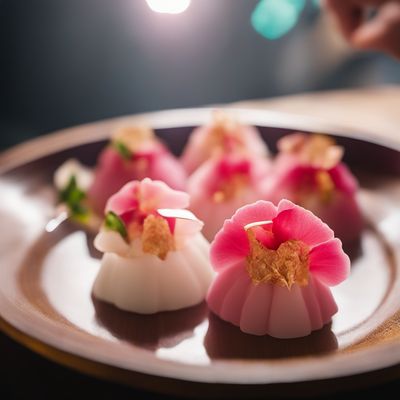
Namagashi
Namagashi is a type of Japanese confectionery that is typically served with tea. It is made with sweet bean paste and mochi, a type of sticky rice cake.
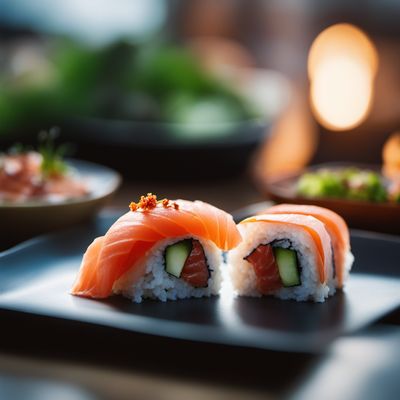
Tekkamaki
Tekkamaki is a type of sushi roll that is made with raw tuna and sushi rice wrapped in seaweed. It is a popular dish in Japanese cuisine and is...




